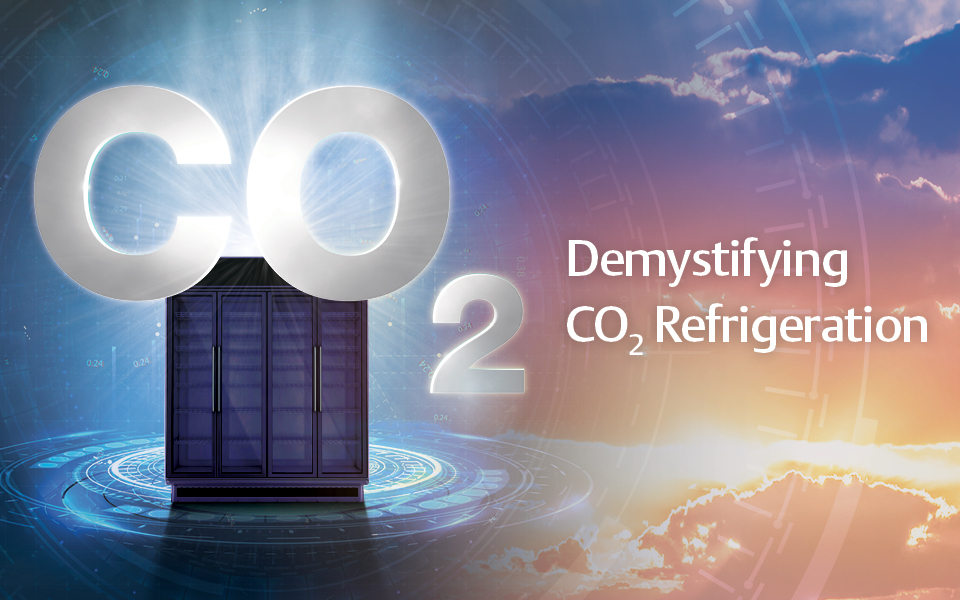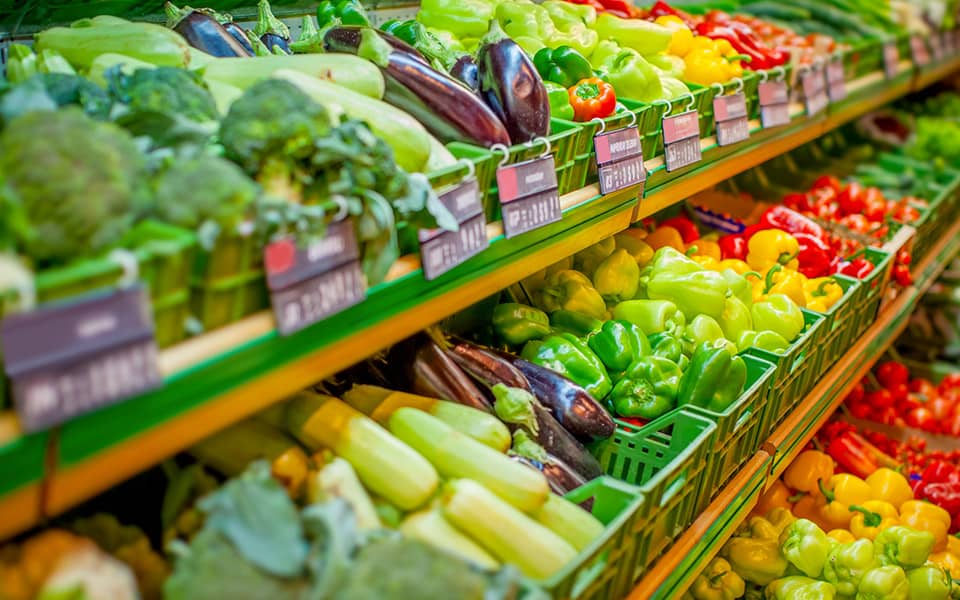*On June 1, 2023 Emerson’s Climate Technologies business became a new standalone company – Copeland. Though our name has changed, we are building on more than a century of HVACR innovation and industry leadership, and Copeland continues to offer the same products, industry stewardship, and learning opportunities you’ve grown to trust. Information found on this webpage posted before June 1, 2023 may contain our old name or branding, but you can be at ease knowing it was created with the knowledge and expertise of Copeland.
The U.S. commercial refrigeration market is poised for a surge in the use of CO2 (R-744) as a refrigerant over the next several years. Although CO2 refrigeration has been a known commodity on the world stage for many decades, most supermarket owners, operators and service technicians in the U.S. have had very little (if any) exposure to it. In a recent article for HVACR Insider, I explored CO2’s unique characteristics and explained they can impact system operation.

From an environmental sustainability perspective, CO2 checks all the right boxes:
- Global warming potential (GWP) of 1
- Zero ozone depletion potential (ODP)
- A1 classification (non-toxic and non-flammable)
With these eco-friendly qualities, it’s easy to see why CO2 is emerging as a low-GWP refrigerant alternative capable of helping food retailers meet their sustainability goals and comply with environmental regulations. But the characteristics of CO2 refrigeration are quite different from traditional hydrofluorocarbon (HFC)-based systems, which has led to reservations about applying it within U.S. food retail outlets.
- Understanding transcritical booster design
CO2 transcritical booster (TCB) systems offer retailers a large, centralized architecture that can provide both medium- (MT) and low-temperature (LT) refrigeration loads for an entire supermarket using R-744. CO2 TCB systems are called booster systems because the LT compressors discharge R-744 into the MT compressors, which then boost the refrigerant to a gas cooler typically located on the roof. The gas cooler (aka condenser) must be able to handle the system’s total heat of rejection from MT compressors at an installation location’s design conditions.
- Differentiating between modes of system operation
R-744 has a critical point of 87.8 °F — which from a refrigeration perspective, is relatively low. As a result, ambient temperatures can impact a CO2 TCB system’s modes of operation. When the ambient (outside) temperature rises above approximately 75 °F, system conditions cause the refrigerant to enter the gas cooler as a supercritical fluid (at or above 87.8 °F). There, in transcritical (or supercritical) mode, the pressure and temperature relationship becomes uncoupled, and each can rise and fall independently of each other. Below the critical point, R-744 is at saturation, which is referred to as subcritical mode. In warmer climates, CO2 systems could operate for extended periods while in transcritical mode.
- Managing high operating pressures
CO2 TCB system operating pressures are significantly higher than HFC systems (i.e., those using R-404A or R-410A). Although this a common concern when service technicians and end users first encounter CO2 TCB systems, understanding where those pressures occur — and how systems are designed to control and manage them — can alleviate these concerns. As MT compressors discharge into the gas cooler, pressures could reach 1,400 psi on a 95 100°F summer day. High-pressure expansion valves (HPVs) are designed to reduce these pressures before re-entering the refrigeration circuit. System- and case-level electronic controllers automatically manage system pressures. MT discharge lines are constructed with stainless steel or special ferrous alloy copper to handle the refrigerant’s high pressures.
- Charging a CO2 TCB refrigeration system
Because R-744 has a high triple point — where the refrigerant’s gas, liquid and solid states coexist at its saturation pressure of 60.4 psi — service technicians need to be especially careful during system charging. If they charge with liquid while system pressures are below the triple point, R-744 turns into dry ice, stopping the refrigerant flow and significantly delaying charging. Instead, technicians should charge with vapor until the system reaches 100 psi, which is safely above R-744’s triple point pressure.
- Dealing with rising pressures during a shutdown
Mitigating the potential for rising system pressures during power outages and system shutdowns is a key consideration of CO2 TCB system design. Systems are designed with pressure-relief valves in each zone to allow for the safe release of refrigerant. During brief shutdowns, system pressures typically don’t rise quickly enough to cause concern. A system’s existing thermal inertia — from its flash tank, liquid line, and MT and LT evaporators — will sustain proper pressures for a considerable period of time. Ambient temperatures — both outside and inside the building — can also impact how long pressure will be sustained.
- Increasing reliance on electronics
Because R-744 is a dynamic refrigerant that reacts quickly to changes in pressures and ambient temperatures, electronic controls are required to perform a variety of essential system baselining and operational functions. Copeland’s E3 supervisory control for CO2 applications integrates seamlessly with case controls to automate system pressure management. Connectivity among vital system sections and components also enables:
- Control over variable fan speeds
- Modulation of system HPVs, bypass gas valves (BGVs) and electronic expansion valves (EEVs)
- Consistent flash tank pressure
- Control over hot gas and liquid injection valves
- Smooth compressor staging & oil management control
- Improving warm climate efficiencies
The energy consumption of a CO2 TCB refrigeration system is an important factor when evaluating its total cost of ownership (TCO), as systems become less efficient during the transcritical mode of operation. Seasonal ambient temperature and humidity ranges, the availability and price of water, and peak electricity demand costs are all key considerations. In recent years, equipment manufacturers have focused on improving system energy efficiencies in warmer climates, leading to a variety of system design optimization strategies:
- Adiabatic gas cooler
- Parallel compression
- Mechanical sub-cooling
- Gas ejector
- Near zero superheat control of MT evaporators (annualized benefit)
- Liquid ejector (annualized benefit)
Retailers must consider all these variables and strategies when they work with their equipment suppliers and design engineers to specify a CO2 TCB system.
To learn more about the fundamentals of CO2 refrigeration, please view the companion installments in our CO2 Chats video series. For more information about Copeland’s comprehensive CO2 products and capabilities, please visit here.
Protection for high-value shipments just got even better
We’re excited to announce the release of Copeland’s newest real-time tracker, the GO Real-Time...

Three proven strategies to prevent cargo theft
The over-the-road (OTR) transport industry is experiencing a surge in cargo thefts. As thieves...

Four Keys to Successful Cold Chain Shipping
Temperature management best practices for maximizing perishable food quality and safety When...
